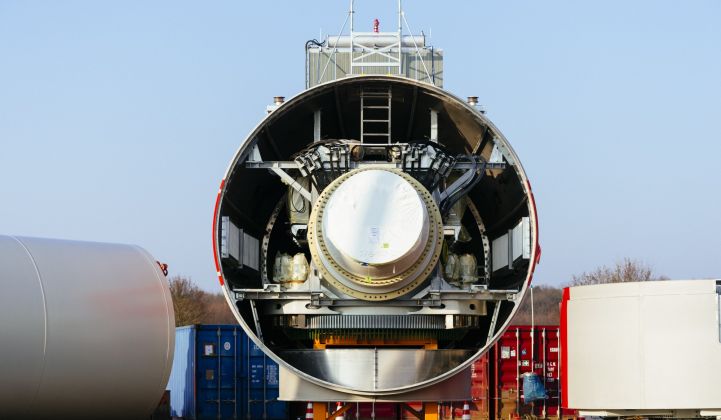Late last month, China’s National Energy Administration published a notice regarding the 2018 Administrative Requirements of Wind Power Development. The Administrative Guidance for Competitive Allocation of Wind Power Projects was attached to the notice, signaling the launch of the auction mechanism for future wind power awards.
In a new research note, MAKE Consulting, now part of Wood Mackenzie Power & Renewables, describes the potential impact of auctions on China's wind market. The free report is available for download here.
According to the report, China’s National Energy Administration (NEA) has repeatedly emphasized its aim for wind power to reach grid parity by 2020. To this end, it reduced the value of feed-in tariffs (FITs) for onshore wind for three consecutive years from 2014 to 2016, with the final announcement giving guidance to FIT levels in 2018. Industry consensus assumed that there would be at least one further round of FIT reductions before 2020 in order to reach grid parity. However, China took a more aggressive approach by changing from the FIT scheme to the auction mechanism.
The Renewable Energy Development Fund (REDF) subsidizes the FITs for wind power projects. However, the NEA estimated that the deficit for REDF payments of renewable projects reached RMB 100 billion ($15.6 billion) by the end of 2017.
The provincial subsidies (i.e., the price difference between wind power and coal power) range between RMB 0.09 and RMB 0.25 per kilowatt-hour in 2018; Hebei has the lowest and Qinghai has the highest level of subsidy. As wind and other renewable energies maintain strong growth rates, the pressure on the REDF will increase substantially, and resolving this issue has been a priority for the NEA.
Wood Mackenzie Power & Renewables' analysts do not expect an installation rush in 2018 and 2019. China has a strong pipeline of projects included in the Development Plans from 2016 to 2018 that were subsequently approved and are eligible for the FIT scheme. The development of this pipeline is expected to support the outlook in 2018 and 2019.
The earliest auctioned projects are not expected to begin construction until the second half of 2019, due to the leadtime required for relevant project approvals after winning the auction bids.
The report goes on to describe additional impacts, inlcluding:
- Competition at auctions in the national wind bases will be extremely fierce, helping wind power prices to reach grid parity
- Developers will increasingly look for investment opportunities in distributed wind power in southern regions
- National state-owned entity (SOE) developers will dominate auctions, while local SOE and private developers will look toward distributed wind power
- Lower turbine pricing will continue to be a priority and further pricing reductions are expected during the early stages of the auction mechanism
For a deeper dive, download the free report here.
***
GTM Research, MAKE Consulting and Wood Mackenzie are combining to form Wood Mackenzie Power & Renewables. With an unparalleled level of depth, our integrated power, solar, wind, storage and grid edge market intelligence services enable you to make strategic decisions and forge the path toward a decarbonized and decentralized electricity market.



